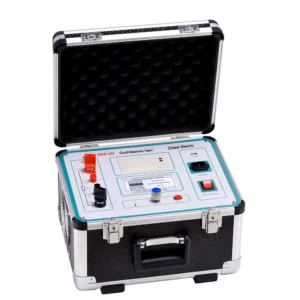Personnel operating a ground resistance tester should receive appropriate training to ensure safe and accurate usage of the equipment. The training may cover several key areas:
- Equipment Familiarization: Training should include a thorough understanding of the ground resistance tester’s features, functions, and operation. Personnel should learn how to set up the equipment, navigate its menu/interface, and interpret measurement results.
- Safety Procedures: Safety training is paramount to prevent electrical hazards and ensure the well-being of personnel. This includes understanding proper grounding techniques, personal protective equipment (PPE) requirements, and precautions to take when working in potentially hazardous environments.
- Testing Procedures: Personnel should be trained on proper testing procedures for measuring ground resistance, including selecting appropriate test locations, preparing the test site, connecting the tester to the ground electrode, and conducting accurate measurements.
- Interpretation of Results: Training should cover how to interpret the results obtained from the ground resistance tester. Personnel should understand the significance of ground resistance values, how they relate to electrical safety standards, and what actions to take based on the test results.
- Calibration and Maintenance: Personnel should receive training on equipment calibration procedures and routine maintenance tasks to ensure the accuracy and reliability of measurements. This may include periodic calibration checks, cleaning, and storage guidelines.
- Troubleshooting: Training should include troubleshooting techniques to address common issues that may arise during ground resistance testing, such as equipment malfunctions, improper connections, or environmental factors affecting measurements.
- Documentation and Reporting: Personnel should learn how to properly document test procedures, measurement results, and any relevant observations. This includes completing test forms, generating reports, and maintaining records for compliance and future reference.
- Regulatory Compliance: Training should cover relevant regulations, standards, and guidelines related to ground resistance testing in the industry or jurisdiction where the testing is being performed. This ensures that personnel understand their obligations and responsibilities for compliance.
- Hands-on Practice: Practical hands-on training is essential for personnel to gain proficiency in using the ground resistance tester effectively. This may involve supervised practice sessions in real-world scenarios to reinforce theoretical knowledge and develop practical skills.
- Continuing Education: As technology evolves and standards change, personnel should engage in ongoing education and training to stay updated on the latest developments in ground resistance testing practices, equipment, and regulations.
By providing comprehensive training in these areas, organizations can ensure that personnel operating ground resistance testers are equipped with the knowledge, skills, and confidence to perform their duties safely and effectively while maintaining compliance with relevant standards and regulations.
